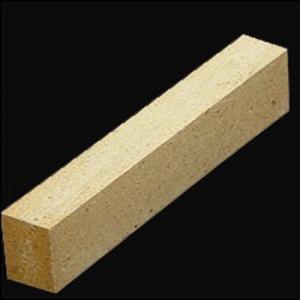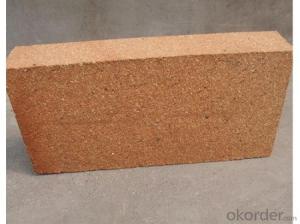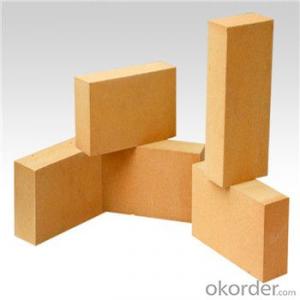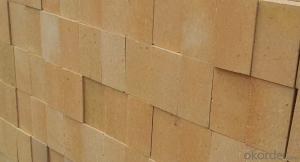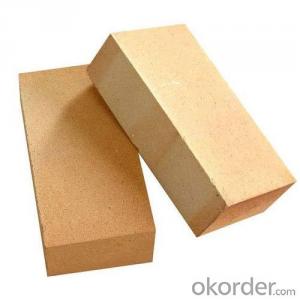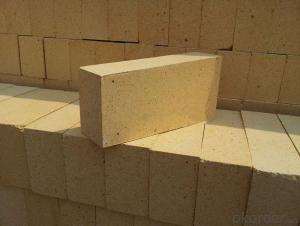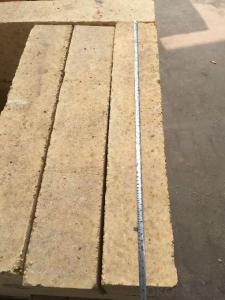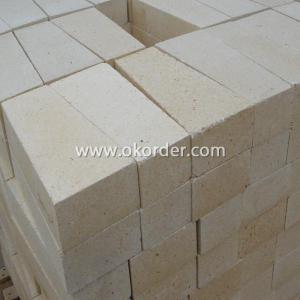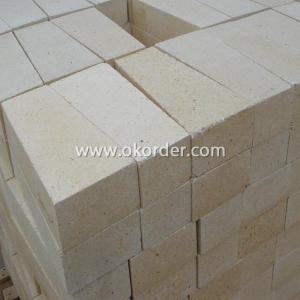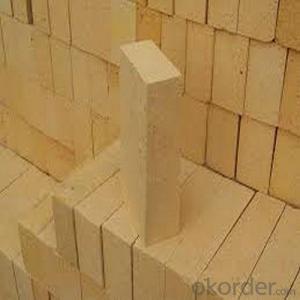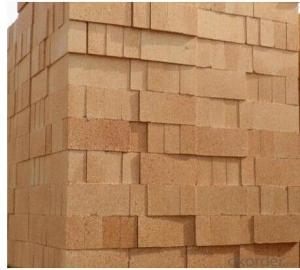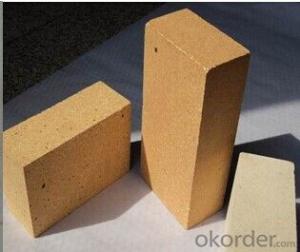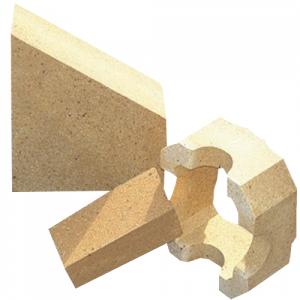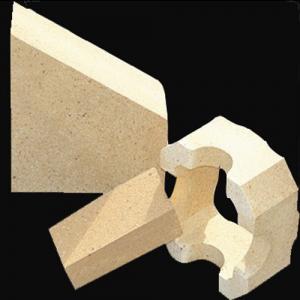Low Porosity Fireclay Brick SG12
- Loading Port:
- China Main Port
- Payment Terms:
- TT or L/C
- Min Order Qty:
- 5 ton m.t
- Supply Capability:
- 1000 Tons Per Month m.t/month
OKorder Service Pledge
OKorder Financial Service
You Might Also Like
General Information of Low Porosity Fireclay Brick SG12
Our corporation produces a comprehensive range of Low Porosity Fireclay bricks, with 30% to 55% alumina content, all of these bricks exhibit excellent performance.
Our Low Porosity Fireclay bricks are the final result of blending excellent calcined flint clay and calcined bauxite, with cutting-edge technology, adding superfine powder, after mixing, drying, forming, in the high temperature shuttle kiln. We ensure you that the Fireclay Bricks made by us possess high quality standard and have gone through all the complicated quality control parameters. Their durability and strength adds life to the structure and they have the capacity of bearing high temperature.
Technical Data of Low Porosity Fireclay Brick SG12 | ||
Physical Properties: | ||
Refractoriness | ℃ | 1750 |
Permanent Linear Change(1400℃×2h)% | % | -0.1~0.05 |
Apparent Porosity, % | % | ≤12 |
Cold Crushing Strength | Mpa | ≥65 |
Refractoriness Under Load (T0.6) | ℃ | - |
Thermal Expansion at 1000℃, | % | - |
Density | g/cm3 | ≥2.35 |
Chemical Analysis: |
|
|
Al2O3 | % | ≥45 |
Fe2O3 | % | ≤1.2 |
Note: | ||
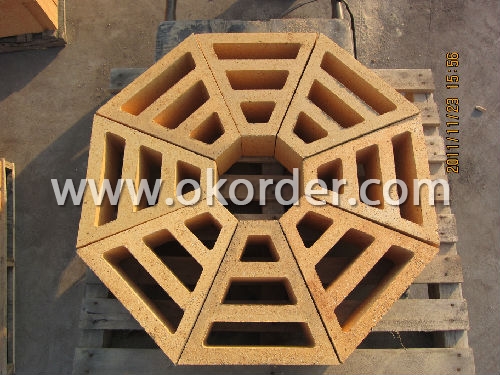
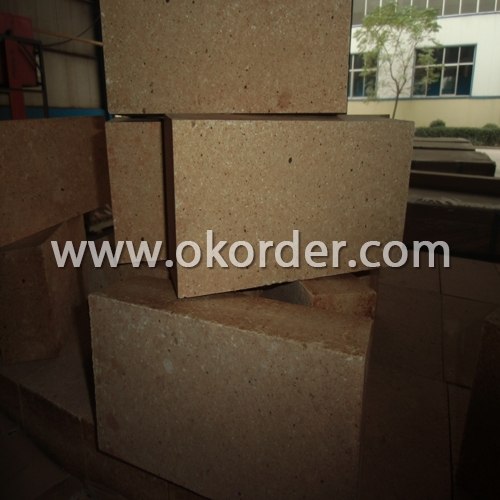

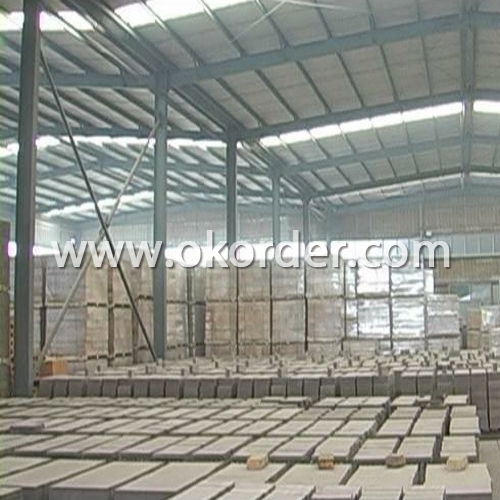
Feature of Low Porosity Fireclay Brick SG12
Resistant to thermal shock, abrasion, chemical attack
High ability for anti-abrasion during work
Low shrinkage degree under high temperature so as to maintaining integrity of the furnace lining
Low apparent porosity, and low Fe2O3 content to reduce the carbon deposit in the blowhole and avoid the bricks broken in case of expansion
Applications of Low Porosity Fireclay Brick SG12
Low Porosity Fireclay Brick SG12 is mainly used in glass furnace.
- Q:What are the application of used refractory brick pieces?
- auxiliary material made of refractory bricks or refractory is not as good as that of bauxite.
- Q:Can refractory be used to sharpen knife?
- Many factories build a smelting furnace by using this kind of bricks. A special knife grinder can be used to sharpen knife, can on 1. They are sizing and non-sizing refractory bricks respectively. Refractory brick is now a lot of fields and industry will introduce one of the raw materials. Products are divided into two different types, refractory brick as a high temperature resistance of the raw materials. In simple terms, working temperature is 770 DEG C, 580 C and 1, of course, refractory bricks also can be used to sharpen knife, use smooth brick to sharpen, need to choose high hardness
- Q:Which is more useful, aerated concrete block or clay brick?
- How to evaluate the porous brick right (aerated concrete block), the practicability of the clay brick, brick which is first aerated concrete block, aerated concrete block and clay brick is the coexistence of wall materials, only the current use rate than the aerated concrete block of clay solid brick.
- Q:What are the advantages and disadvantages of clay bricks?
- Disadvantages of clay bricks1., since the majorCompared with other masonry materials, the weight of the clay brick is relatively large, so the structure needs to bear heavy deadweight, and the cost of the building increases. 2., poor sound insulation effectSound travels to the clay brick, because of its low porosity, without isolation of sound, sound decibel little drop, while other building materials such as now used more concrete block filling the void ratio is large, sound insulation effect is obvious.3, environmental destructionBecause clay bricks are mainly sintered by excavation soil, soil erosion and damage to vegetation have resulted in soil erosion and serious damage to the environment. Therefore, the country is gradually stopping the project to use clay bricks.
- Q:th choose of different refractory bricks in the rotary?kiln
- According to the characteristics of each belt, magnesium chromium brick. Take the most kiln foe example, the configuration of kiln refractory is not the same, the burning of the product is not the same. there are many kinds of rotary kiln. magnesia bricks are generally used in high temperature zone, anti-stripping alumina brick,silmo brick are used in temperate zone, clay brick is mainly used in low temperature zone. generally inlet and the outlet use corundum mullite, wear-resistant castable, spinel brick,etc. select brick of proper performance, but also take into account the economy
- Q:What are the disadvantages of sintered clay bricks?
- Disadvantages: FrostPan cream also known as cream, is salting out phenomenon in the process of using brick. The excess soluble salt in the brick is affected by water absorption and dissolves when water evaporates. When the crystal is precipitated, it expands and causes the brick surface to flake. Standard: excellent products without efflorescence, first do not allow secondary efflorescence, qualified products is not allowed to have serious flooding.Lime crackingLime burst refers to brick with limestone, turn after absorbing water, because the lime burst and the expansion of the gradually maturing. This phenomenon affects the quality of bricks and reduces the strength of masonry
- Q:What is sintered non clay brick?
- According to the different production process of bricks into sintered brick and non sintered brick. Sintered brick in China has more than two thousand years of history, is still a very wide range of wall materials. Many kinds of brick, according to the raw materials used for clay brick, shale, coal gangue brick, fly ash brick, lime sand bricks and slag brick;
- Q:What's the difference between fired clay bricks and sintered porous bricks?
- Clay, shale, coal gangue or fly ash as the main raw material, calcined by the hole rate of not less than 25%, the size of the hole is small and large number, mainly used for load-bearing parts of the brick, referred to as porous brick. At present, sintered porous bricks are divided into two types of P bricks and M bricks. As compared with ordinary clay bricks, sintered porous bricks have higher compressive strength, corrosion resistance and durability, as well as light weight and good thermal insulation performance. Sintered porous bricks can be widely used in load-bearing walls of industrial and civil buildings.
- Q:Why do some people say that clay brick insulation effect is good, and some people say that bad, in the end what is right?
- The heat preservation effect should be taken away from the heat insulation capacity of the material. The ordinary clay brick has small heat capacity and slow heat conduction, so it is more thermal insulation.
- Q:What types of building blocks do you have?
- Ordinary housing: building brick (clay brick), and non sintered brick (sand lime brick, fly ash brick, cement brick, etc.)
1. Manufacturer Overview |
|
|---|---|
| Location | |
| Year Established | |
| Annual Output Value | |
| Main Markets | |
| Company Certifications | |
2. Manufacturer Certificates |
|
|---|---|
| a) Certification Name | |
| Range | |
| Reference | |
| Validity Period | |
3. Manufacturer Capability |
|
|---|---|
| a)Trade Capacity | |
| Nearest Port | |
| Export Percentage | |
| No.of Employees in Trade Department | |
| Language Spoken: | |
| b)Factory Information | |
| Factory Size: | |
| No. of Production Lines | |
| Contract Manufacturing | |
| Product Price Range | |
Send your message to us
Low Porosity Fireclay Brick SG12
- Loading Port:
- China Main Port
- Payment Terms:
- TT or L/C
- Min Order Qty:
- 5 ton m.t
- Supply Capability:
- 1000 Tons Per Month m.t/month
OKorder Service Pledge
OKorder Financial Service
Similar products
New products
Hot products
Related keywords
